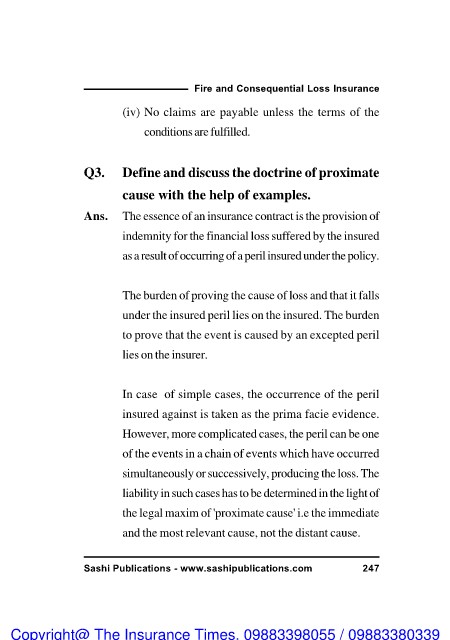Page 234 - Fire Insurance Ebook IC 57
P. 234
Fire and Consequential Loss Insurance
(iv) No claims are payable unless the terms of the
conditions are fulfilled.
Q3. Define and discuss the doctrine of proximate
cause with the help of examples.
Ans. The essence of an insurance contract is the provision of
indemnity for the financial loss suffered by the insured
as a result of occurring of a peril insured under the policy.
The burden of proving the cause of loss and that it falls
under the insured peril lies on the insured. The burden
to prove that the event is caused by an excepted peril
lies on the insurer.
In case of simple cases, the occurrence of the peril
insured against is taken as the prima facie evidence.
However, more complicated cases, the peril can be one
of the events in a chain of events which have occurred
simultaneously or successively, producing the loss. The
liability in such cases has to be determined in the light of
the legal maxim of 'proximate cause' i.e the immediate
and the most relevant cause, not the distant cause.
Sashi Publications - www.sashipublications.com 247
Copyright@ The Insurance Times. 09883398055 / 09883380339

